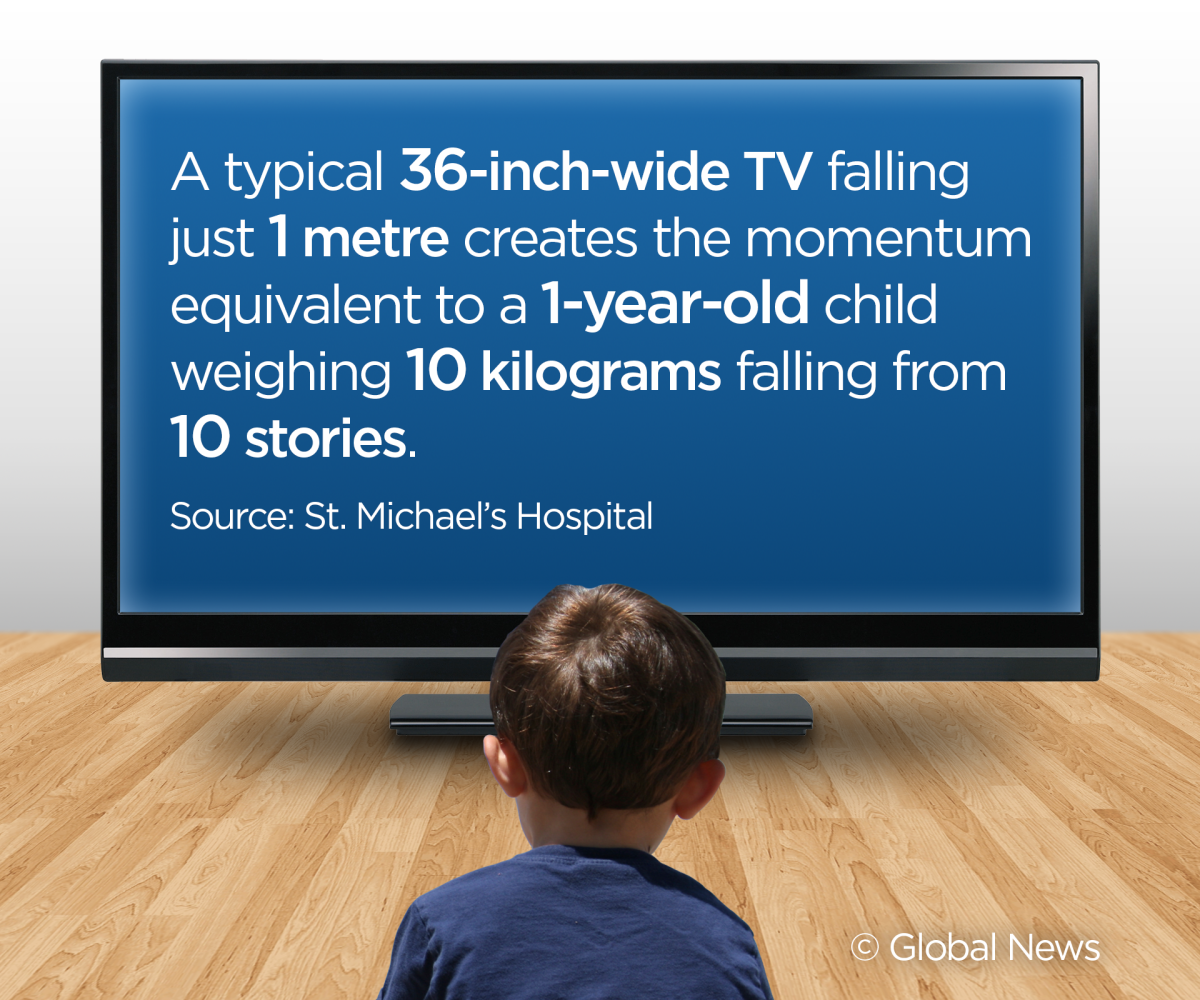It was Easter morning; Kristen Barbe-Faulkner was getting dressed, her son was playing quietly and then she heard a sound she will never forget.

A television set had fallen off a dresser and caused a traumatic brain injury for her 2-year-old son Jayce. He had been reaching up to get his favourite DVD.
“I ran in and I found him on the floor, I called 911,” Barbe-Faulkner told Global News.
“I thought I had lost my baby…I just kept telling him to hold on.”
Jayce was rushed by ambulance to an Ottawa hospital, diagnosed with a skull fracture. He survived, but some Canadian children do not.
“They (falls) can be fatal. And in fact most of the injuries are to the head. About two-thirds to three-quarters of the injuries are to the head. And if you can imagine if the corner of the television goes to the side of the head that can puncture a thin skull,” neurologist Dr. Michael Cusimano from St. Michael’s Hospital told Global News.
Injuries to children caused by falling or toppling televisions are on the rise, and toddlers are most at risk, according to Cusimano’s study. The increasing number of large flat-screen televisions in Canadian homes is now a hazard for children, especially one-to-three-year-olds who climb on televisions to grab a toy or something desirable.

Get weekly health news
“This risk is actually going up,” said Cusimano. “It would be tragic to lose even one more child to an injury like this.”
“We think whenever we hear of one that it’s just a freak accident. But these are all preventable and they all occur.”
Cusimano and study co-author Nadine Parker reviewed 29 studies from seven countries. They found tens of thousands of children injured by toppling televisions. The study was published in Journal of Neurosurgery: Pediatrics.
“In the U.S. alone there are around 10,000 injuries reported a year. So in Canada the equivalent would be around a thousand,” said Cusimano.
READ MORE: Calgary girl crushed to death by TV set in her southwest home
For parents, grandparents, and caregivers who think their presence in the home can stop these injuries from happening, think again. The study showed close to 84 per cent of these events are happening in the home, and even though caregivers are present the incidents are not witnessed 75 per cent of the time.
A 2005 study led by pediatric neurosurgeon Dr. James Drake at the Hospital for Sick Children in Toronto showed 18 children, aged 12 months to 10 years old, had been treated for a range of injuries due to falling TVs between 1992 and 2005. Sixteen of them had skull fractures. Some of the children were left with short- and long-term symptoms, from neurological deficits causing severe disability to hearing loss and facial paralysis.
Dr. Cusimano wants to spread awareness that these injuries are happening and that they are preventable, especially if television sets are secured properly. He also believes there is a role for government and regulators in protecting children.
As for Jayce, he has recovered and his mother has advice for other parents.
“Don’t put a TV on a dresser, and don’t have a TV that is not secured,” said Barbe-Faulkner.
WATCH BELOW: The U.S. Consumer Product Safety Commission’s PSA on the hazards of falling televisions
With files from the Canadian Press.









Comments